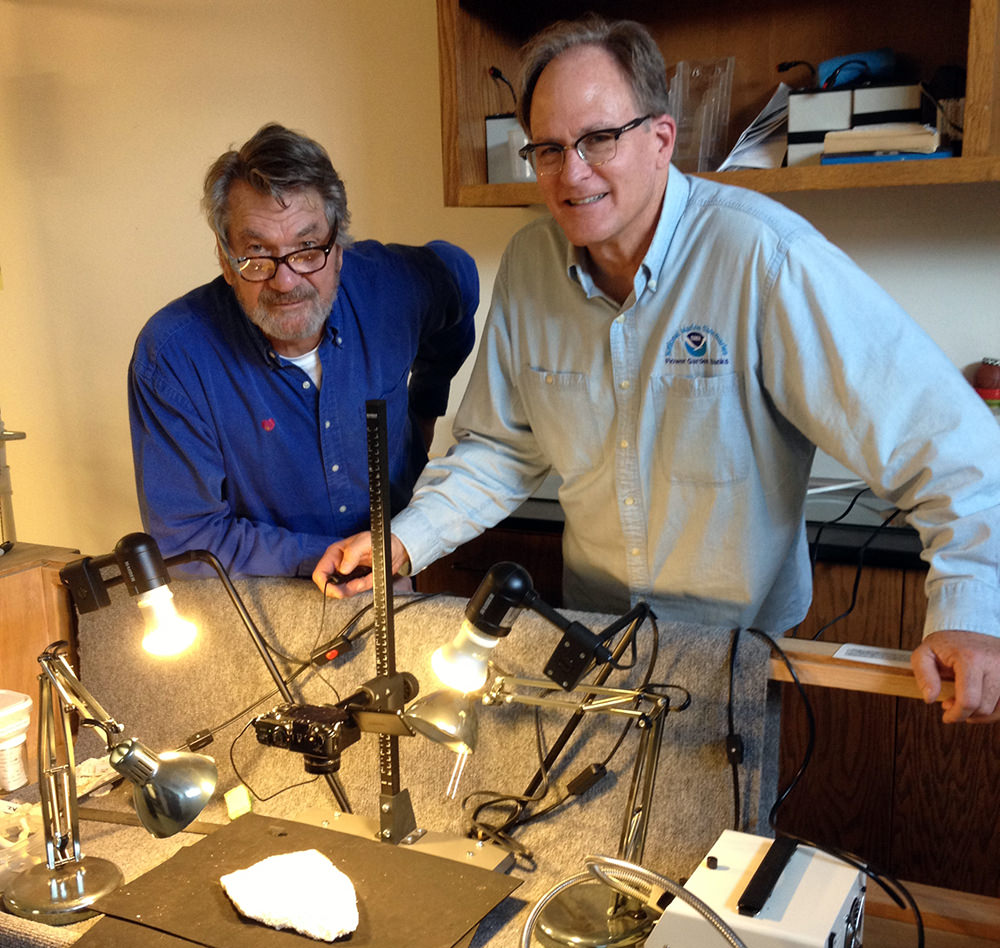Bright Bank
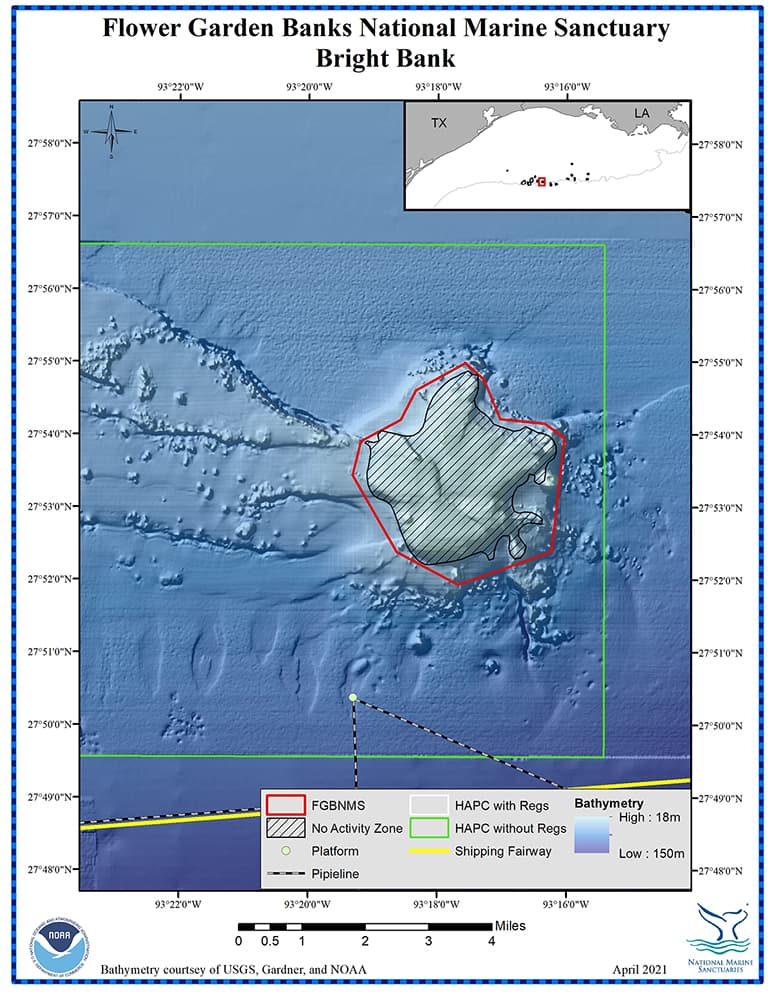
Depth Range: 112-384 feet (34-117 m)
Distance from Land: 124 miles (200 km)
Area: 7.7 square miles (19.9 sq km)
Bright Bank is shaped somewhat like a lion’s paw, with its crest around 112 feet (34 m) under water. It is structurally connected to Rankin and 28 Fathom Banks, to its west, by a series of patch reefs.
In the shallower areas, historic records report boulder-like reef structures occurring singly or clustered into reef patches up to 64 feet (50 m) in diameter.
Bright Bank was named after Tom Bright, a Texas A&M University marine biologist.
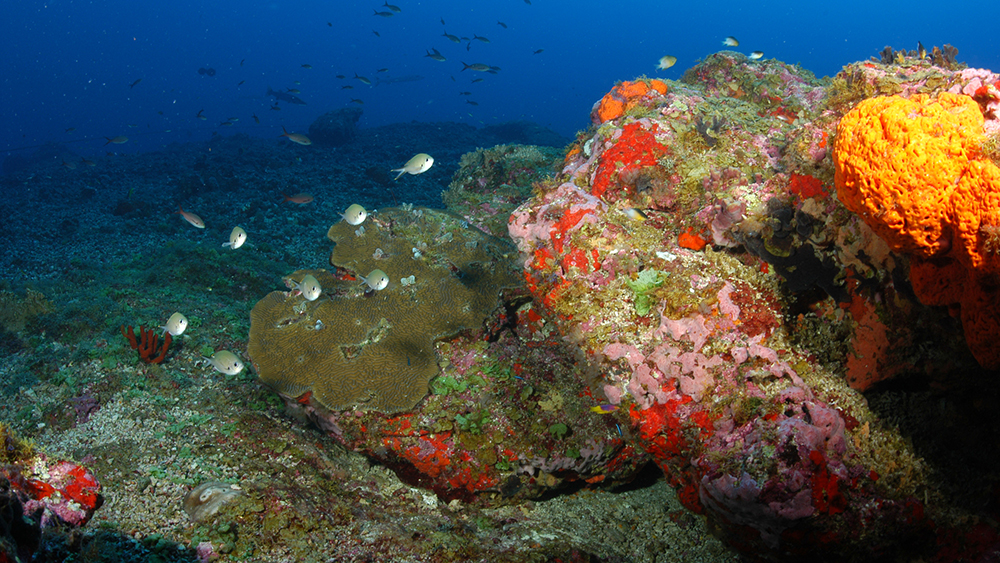
In the 1980’s, treasure salvage operators laid claim to a supposed Spanish Galleon on Bright Bank, and salvors have been exploiting/exploring the bank since that time. This has caused tremendous destruction to the coral boulders on the crest of the bank and left excavation pits 10-13 feet (3-4 m) deep. Sanctuary regulations prohibit this type of activity, whereas other federal regulations did not.
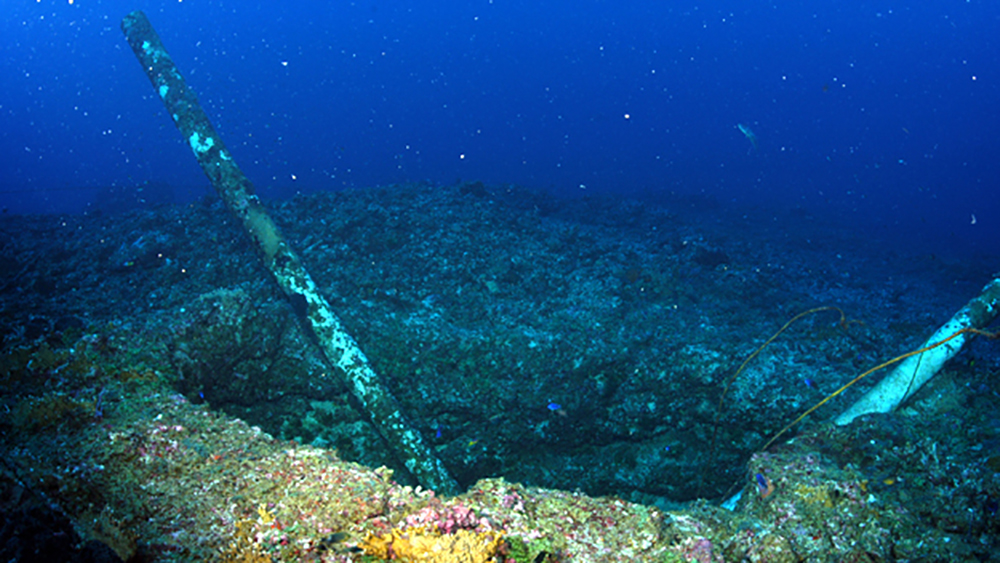
The deeper areas at Bright Bank include extensive coralline algae and deep coral habitat, including some hard corals. Extensive fields of algae (Codium sp.) have also been documented.
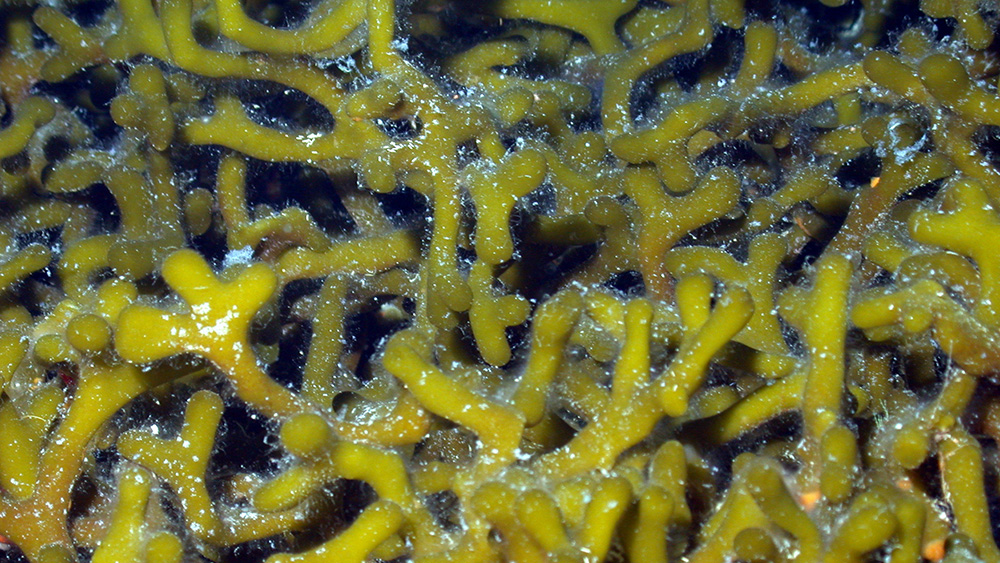
Bright Bank is part of the Habitat Area of Particular Concern (HAPC) that also encompasses Rankin and 28 Fathom Banks, and the extensive area of patch reefs in between these features.
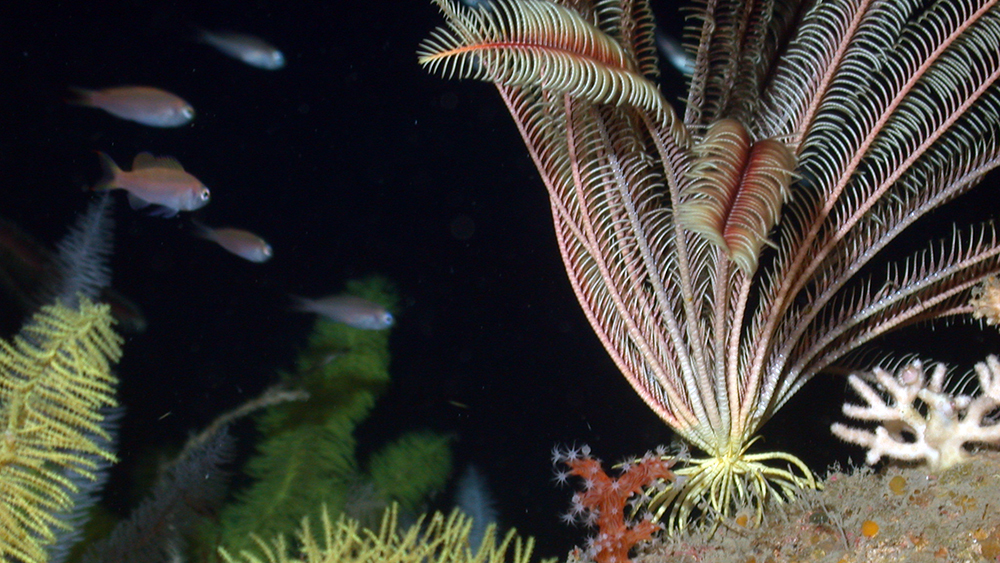
Who Is Tom Bright?
Tom Bright was a Texas A&M marine biologist, who studied the Flower Garden Banks and surrounding areas throughout the 1970s and 1980s as part of the Bureau of Land Management (BLM) Topographic Features Study.
The results of his work with fellow researchers Dick Rezak and David McGrail were published as Reefs and Banks of the Northwestern Gulf of Mexico in 1985. At the time of publication, it contained the most thorough account "of the geological, biological and physical dynamics of the Flower Gardens and other northwestern Gulf banks." (FGB EIS 1991)
Bright was also instrumental in getting Flower Garden Banks designated as a National Marine Sanctuary, drafting a major portion of the original Environmental Impact Statement. In many circles, he is referred to as "the father of the Flower Garden Banks."
Bright continues to work with and support the sanctuary in his retirement.
